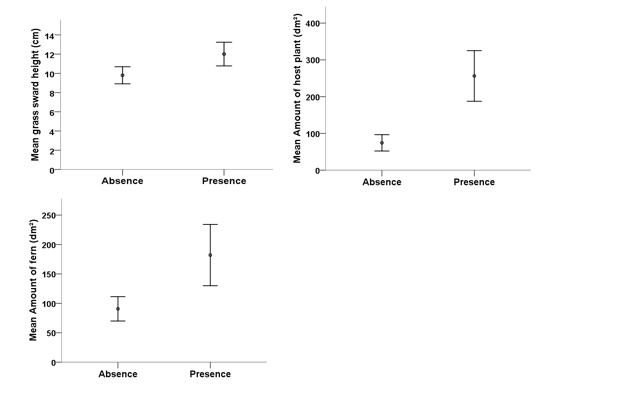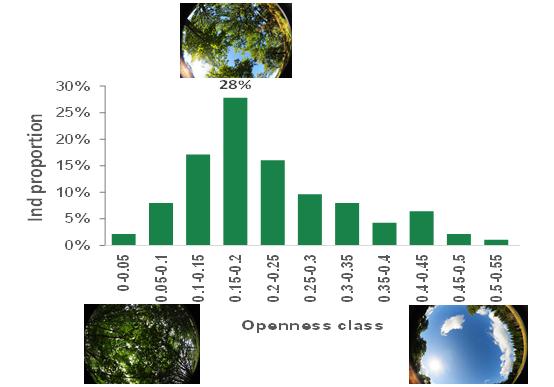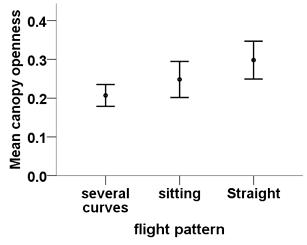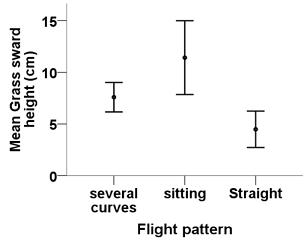Effect of habitat structure on occurrence of L. achine
Habitat factors were recorded for a total of 187 butterfly occurrences and 470 selected control points from 11 sites in Östergötland.
The amont of host plant and grass sward height had largest effect among environmental variables on the occurrence of L. achine ( Fig. 1). Furthermore, the occurrence of the butterflies increased with increasing grass sward height and amount of fern ( Fig. 1).

In contrast, occurrence of the butterflies increased with decreasing canopy openness. The highest proportion (28%) of the occurrence in study sites was recorded in the areas with 0.15-0.2 openness which indicates that L. achine showed a tendency to use areas with more canopy closure rather than open areas. But the occurrence also declined in dense areas (Fig. 2)

Effect of habitat structure on movement behaviour
The flight pattern was classified into three categories i.e. straight flight, several curves and sitting. Butterflies were more likely to fly faster and straight than fly with several curves in short grass sward height and open canopy cover (Fig. 3, 4).
With regard to sitting behaviour, butterflies were more likely to perch in areas with tall grass sward height (Fig. 3) and had a higher tendency to perch with increasing canopy openness compared to flying with several curves (Fig. 3, 4).


Host plant is necessary for Lopinga achine to oviposition and larval feeding. Bergman(2000), showed that 83- 85% of L. achine larva used C. montana compared to other plant species. However, except host plant other habitat factors also play an important role for occurrence and survival of this species. Taller grass sward height provides a cool and humid microclimate near the soil surface which is crucial for embryonic development of L. achine eggs. The amount of canopy cover has a direct impact on the amount of sunlight that expose to the surface. L. achine eggs are sensitive to desication and suitable amount of canopy closure prevents dry microclimate. On the other hand, very dense forest with closed canopy cover provide very humid and dark microclimate condition which is not suitable for growing host plant. In contrast, I found high abundance of fern community provide a good condition for growing C. montana. In addition, both fern abundance and tall vegetation are a good shelter for butteflies with preventing the effect of wind power and predation risk.
In conclusion, habitat factors are crucial for population viability of L. achine. There are some suggestions that should be taken into consideration in conservation programs:
1. Providing a suitable condition for growing host plant
2. Preventing high grazing pressure and mowing before and during flight season
3. Providing suitbale amount of canopy cover, preventing too much clear cutting
4. Forest management in order to prevent very high dense foliage and closed canopy cover
5. Further studies about butterflies' movement behaviour
Responsible for this page:
Director of undergraduate studies Biology
Last updated:
06/15/16
